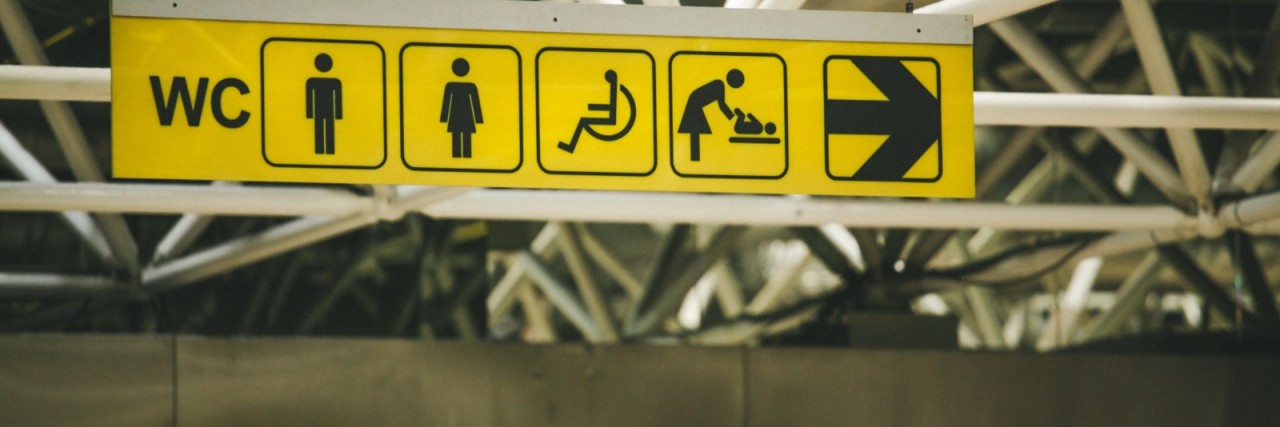My daughter, who has caudal regression syndrome, needs her wheelchair. She can walk short distances in her walker, but for most trips outside the house — grocery shopping, field trips, playdates, and so on — we have to bring her wheelchair. Unfortunately, more often than not, that also means dealing with bathrooms too small to accommodate it.
Accessible bathrooms are not all created equal.
First off, let’s talk about so-called accessible bathrooms. There is a wide, wide disparity between how they’re built and what people may need. Sometimes they’re wide, but not long. Sometimes they’re long, but not wide. Sometimes they’re wider than the other stall, but just not wide enough. Sometimes you luck out and find one that does have enough room all around, but the toilet paper roll is placed where you can’t reach it when you’re sitting on the toilet.
So you might be able to get a wheelchair in the stall, but there are plenty of times when you have a caregiver and a wheelchair-using person, like me and my daughter. More often than not, it’s difficult getting around the chair after having pushed it from behind, in order for her to transfer to the toilet. She’s fortunate that she has the upper body strength to do so. But what about caregivers who help people who can’t transfer to the toilet? And if there isn’t room for an adult, a small wheelchair, and a child, then how in the world can anyone expect two adults and an adult-sized wheelchair to fit?
For the time being, I can force my way through this problem because I can pick my daughter up. If there are no accessible stalls — or if said stall is just not big enough for the two of us, or if someone is using it — I can leave her wheelchair outside the stall and carry her inside. So far, I’ve never had to worry about people trying to steal her wheelchair.
But Namine won’t be a child forever. She’s already gotten too tall for her wheelchair (it’s been extended twice already), and there will come a time when she is on her own and unable to use the bathroom because they just don’t build all of them with more than a single subset of disabled people in mind.
Family bathrooms are awesome.
Imagine, for a moment, that instead of there being a male bathroom and a female bathroom, there are just two bathrooms. My daughter goes into one and finds all the stalls in use. So she goes into the other bathroom and finds an open stall. I’m failing to see a downside here.
This is precisely what family bathrooms are. Those are few and far between, though, and they’re just a single room, for the use of one family at a time. We need more of them!
I’ll admit that most dads probably don’t bring their daughters into public bathrooms at age 7. Under other circumstances, I’m sure the dad would send his daughter into the women’s room by herself. But even though she’s fully capable of transferring herself to and from her wheelchair and a toilet, the unpredictable state of bathroom stalls gives me pause. So most times, I still go into the bathroom with her. I, being the male adult, can’t go into the women’s bathroom, so she and I go into the men’s together.
There is much that can be improved when it comes to disability and bathrooms, both in terms of construction and attitude. But with more awareness, I believe we can make a more accessible future for our children.
This post was originally published on eichefam.net.
The Mighty is asking the following: Describe a moment where you experienced intolerance or inaccessibility. What needs to happen to change this? Check out our Submit a Story page for more about our submission guidelines.

